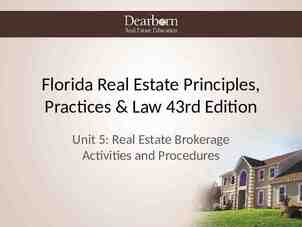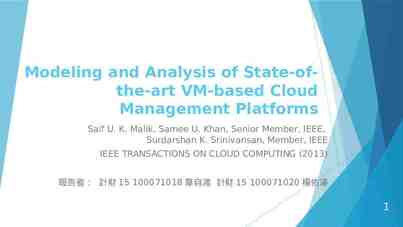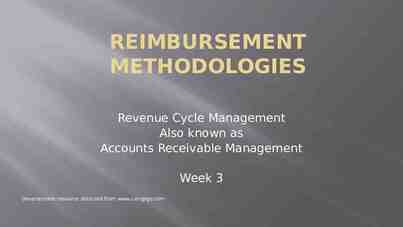Lesson 6: Evaluating Performance DPMAP Rev.2 July 2016
22 Slides970.30 KB

Lesson 6: Evaluating Performance DPMAP Rev.2 July 2016

No surprises for either party at the end of the appraisal cycle DPMAP Rev.2 July 2016 (2)

Learning Objectives Upon completion of this lesson, you will be able to: Recognize important facets of the Evaluating Phase. Describe how employees’ inputs benefit the final performance appraisal discussion. Explain how to prepare for the performance discussion. DPMAP Rev.2 July 2016 No surprises for either party at the end of the appraisal cycle (3)

Performance Management Ongoing Supervisors and employees share responsibility Consist of: Proactively planning work and setting expectations Continually monitoring performance Evaluating performance in a summary fashion Recognizing and rewarding good performance PERFORMAN CE MANAGEME NT No surprises for either party at the end of the appraisal cycle DPMAP Rev.2 July 2016 (4)

Evaluating Performance Evaluating Performance Evaluating performance entails assessing performance against the performance elements and standards in the employee’s approved performance plan and assigning a rating of record based on work performed during the appraisal cycle DoD Instruction 1400.25, Vol. 431 No surprises for either party at the end of the appraisal cycle DPMAP Rev.2 July 2016 (5)

Evaluating Performance Prepared and documented in the MyPerformance Tool on DD 2906 Performance Appraisal Cycle 01 April to 31 March Performance Ratings 5 - Outstanding 3 - Fully Successful 1 - Unacceptable Employee Performan ce Rating Performa nce Narrative PERFORM ANCE APPRAISA L Employ ee Input No surprises for either party at the end of the appraisal cycle DPMAP Rev.2 July 2016 (6)

Employee Performance Ratings (5) OUTSTANDING The average score of all performance element ratings is 4.3 or greater, with no element being rated a “1”, resulting in an overall rating of record that is a “5”. (3) FULLY SUCCESSFUL The average score of all performance element ratings is less than 4.3, with no element being rated a “1”, resulting in an overall rating of record that is a “3”. (1) UNACCEPTABLE At the end of the appraisal cycle, an employee’s performance is rated by his or her supervisor against the employee’s performance plan Employee must be provided a written rating of record and been under an approved performance plans for 90 calendar days during the Any performance element rated as a “1”. No surprises for either party at the end of the appraisal cycle DPMAP Rev.2 July 2016 (7)

SAMPLE Performance Rating Narratives Level 5 - Outstanding Produces exceptional results or exceeds expectations well beyond specified outcomes Sets targeted metrics high and far exceeds them (e.g., quality, budget, quantity) Handles roadblocks or issues exceptionally well and makes a long-term difference in doing so Is widely seen as an expert, valued role model, or mentor for this work Exhibits the highest standards of professionalism Level 3 – Fully Successful Effectively produces the specified outcomes, and sometimes exceeds them Consistently achieves targeted metrics Proactively informs supervisor of potential issues or roadblocks and offers suggestions to address or prevent them Achieves goals with appropriate level of supervision Level 1 - Unacceptable Does not meet expectations for quality of work; fails to meet many of the required results for the goal Is unreliable; makes poor decisions; misses targeted metrics (e.g., commitments, deadlines, quality) Lacks or fails to use skills required for the job Requires much more supervision than expected for an employee at this level No surprises for either party at the end of the appraisal cycle DPMAP Rev.2 July 2016 (8)

Evaluating Phase Roles and Responsibilities Employees Provide input Include each performance element Restate understanding of these performance elements Highlight all of the most significant achievements Make the connection accomplishment result impact on the organization Note challenges, how they were resolved, and lessons learned Supervisors Request and consider employee input Consider obstacles encountered and overcome Prepare a written narrative and rating on each performance element Make meaningful distinctions based on performance; foster and reward excellent performance; address performance issues Clearly communicate approved and finalized ratings No surprises for either party at the end of the appraisal cycle DPMAP Rev.2 July 2016 (9)

Employee Input and Supervisor Evaluation Employee Input Written by employees about themselves Compares performance during the appraisal cycle to performance elements and standards Provides opportunity for employee to state accomplishments and impact Focuses on employees’ perception of their strengths and improved performance Emphasizes organizational impact of performance Makes supportable distinctions in performance above Fully Successful level (if applicable) Includes awards, recognitions, and compliments received during the appraisal cycle Supervisor Evaluation Written by supervisors about employee performance Compares employee input, if completed, and performance elements and standards Provides employees with meaningful, constructive, and candid feedback Focuses on supervisors’ assessment of strengths, improvement notes, and areas for improvement Emphasizes organizational impact of performance Makes meaningful distinctions in performance and provides supporting documentation of the recommended rating (if applicable) Includes observations made by other managers, supervisors, customers, or peers No surprises for either party at the end of the appraisal cycle DPMAP Rev.2 July 2016 (10)

Preparing for Performance Discussions Conducting successful performance discussions requires preparation Supervisors may use the following steps to prepare: Gathe r the mater ial Revi ew and write Sched ule the meeti ng No surprises for either party at the end of the appraisal cycle DPMAP Rev.2 July 2016 (11)

Gather the Material Have all the necessary tools close at hand before starting to write the performance discussion narrative. This includes: A copy of the employee's performance plan Notes of previous meetings Employee input documents Gather the Written or recorded feedbackReview on employee performance fromSchedule other the and write meeting material sources No surprises for either party at the end of the appraisal cycle DPMAP Rev.2 July 2016 (12)

Review the Material When writing the narrative, supervisors should consider: Responsibilities and Duties Performance Developmental Needs Gather the material Review and write Schedule the meeting No surprises for either party at the end of the appraisal cycle DPMAP Rev.2 July 2016 (13)

Write the Performance Narrative Supervisors write a performance narrative that describes the employee’s performance measured against the performance standards for the appraisal cycle Performance narratives : A written rating of record must be provided at the end of the appraisal cycle for each employee who has been under an approved performance plan for 90 calendar days during the cycle. Gather the material Justify how an employee’s ratings are determined Are required for each element rated “Outstanding” and “Unacceptable” Are highly encouraged for each element rated “Fully Successful” as a means of recognizing all levels of accomplishments and contributions to mission success Review and write Schedule the meeting No surprises for either party at the end of the appraisal cycle DPMAP Rev.2 July 2016 (14

Schedule the Meeting When scheduling performance discussions, supervisors set the date, time, and location of the meeting with the employee Note: Per DODI 1400.25, volume 431, a rating record of “Unacceptable” must be reviewed and approved by a higher level reviewer. Supervisors should be sure to familiarize themselves with and follow local policy before they communicate the rating to an employee. Supervisors should contact their Employee Relations Specialist in Human Resources prior to rating an employee as “Unacceptable.” Gather the material Review and write Schedule the meeting No surprises for either party at the end of the appraisal cycle DPMAP Rev.2 July 2016 (15)

Exercise: End-of-Year Meeting Video No surprises for either party at the end of the appraisal cycle DPMAP Rev.2 July 2016 (16)

Exercise Debrief: End-of-Year Meeting Video What did the supervisor do in this meeting that was positive and/or useful? What did the employee do in this meeting that was positive and/or useful? Where were the Trust Behaviors? No surprises for either party at the end of the appraisal cycle DPMAP Rev.2 July 2016 (17)

Performance Discussions DPMAP requires three performance discussions between supervisor and employee during the performance appraisal cycle. THEY ARE: Initial Performance Planning Meeting Progress Review Final Performance Appraisal Discussion In addition to those required, more frequent and meaningful periodic discussions between supervisors and employees are HIGHLY encouraged. They help to: Understand expectations toward goals Facilitate supervisor-employee engagement Increase the amount of feedback Contribute to a more complete and accurately documented appraisal Encourage supervisors to recognize and reward deserving employees in a more timely manner All performance discussions should be given sufficient, uninterrupted time, in a suitable private location, and results documented No surprises for either party at the end of the appraisal cycle DPMAP Rev.2 July 2016 (18)

Resolving Differences A rating of record is official even if the employee does not sign it If possible, differences should be resolved informally If they cannot be resolved, the employee: – May raise issues related to the performance appraisal process through the administrative grievance system or, where applicable, the negotiated grievance procedure – Has the right to appeal performancebased actions Title 5, Code of Federal Regulations §432 and §752 No surprises for either party at the end of the appraisal cycle DPMAP Rev.2 July 2016 (19)

Learning Objectives Review You should now be able to: Recognize important facets of the Evaluating Phase. Describe how employees’ inputs benefit the final performance appraisal discussion. Explain how to prepare for the performance discussion. No surprises for either party at the end of the appraisal cycle DPMAP Rev.2 July 2016 (20)

Questions? Are there any questions? DPMAP Rev.2 July 2016 “No surprises for either party at the end of the appraisal cycle” (21)

Additional Resources DODI 1400.25, Volume 410, DoD Civilian Personnel Management System: Training, Education, and Professional Development. DODI 1400.25, Volume 431, DoD Civilian Personnel Management System: Performance Management and Appraisal Program. DODI 1400.25, Volume 451, DoD Civilian Personnel Management System: Awards. DCPAS Resources and References web site includes: DCPAS HR Toolkit, Tip Sheets and Checklist, MyPerformance Training Videos, and MyPerformance User Guides https://www.cpms.osd.mil/Subpage/NewBeginnings/ResourcesReferences/ DCPAS LERD web site https://dodhrinfo.cpms.osd.mil/Directorates/HROPS/Labor-and-Employee-Relations/Pages /Home1.aspx Corporate Leadership Council. Building the High-Performance Workforce: A Quantitative Analysis of the Effectiveness of Performance Management Strategies (Washington D.C.: Corporate Executive Board, 2002) No surprises for either party at the end of the appraisal cycle DPMAP Rev.2 July 2016 (22)






